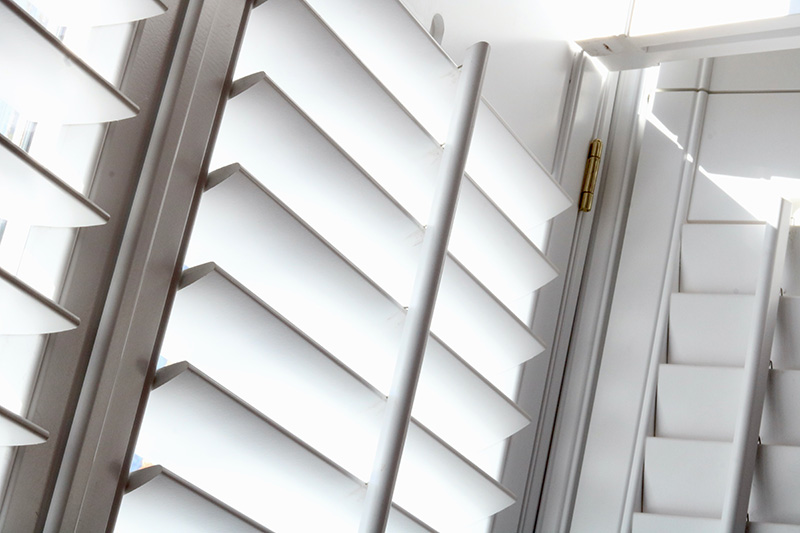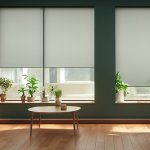Wood shutters have long favored commercial spaces due to their timeless appeal and functional benefits. Wood shutters offer a blend of elegance and practicality in settings such as offices, retail stores, and restaurants. They provide excellent control over natural light, ensuring that spaces can be brightly lit or dimmed according to the business’s needs. Additionally, wood shutters contribute to the overall ambiance of a commercial environment, enhancing its aesthetic value and creating a professional, welcoming atmosphere.
The natural beauty of wood shutters adds a touch of sophistication that complements various interior design themes. Beyond aesthetics, they also offer improved privacy and sound insulation benefits. Their durability and adaptability make them a valuable investment for commercial properties, where maintaining a high standard of appearance and functionality is crucial.
Importance of Regular Maintenance for Durability and Aesthetics
TDespite their robustness, wood shutters require regular maintenance to preserve their beauty and functionality. Regular upkeep is essential to address wear and tear that can occur due to factors such as sunlight exposure, dust accumulation, and changes in humidity. Proper maintenance helps prevent warping, cracking, or discoloration, ensuring that the shutters continue to enhance the commercial space effectively.
Routine maintenance also extends the lifespan of wood shutters, protecting your investment and reducing the need for costly repairs or replacements. By adhering to a maintenance schedule, businesses can ensure that their shutters remain in optimal condition, thereby upholding their visual appeal and functional efficiency. Regular care maintains the shutters’ aesthetic quality and ensures they operate smoothly, contributing to a comfortable and professional environment.
Top 7 Maintenance Checklist for Commercial Wood Shutters
- Inspection and CleaningInspecting the Condition Regular inspection is crucial to identify potential issues with your wood shutters. Look for signs of wear, such as cracks, warping, or peeling paint. Inspect the wood surface for any discoloration or stains indicating moisture damage or excessive sunlight exposure. Pay attention to the hinges and joints to ensure they are not loose or rusted. Cleaning Guidelines Keeping your wood shutters clean is essential for maintaining their appearance and function. Dust and dirt can accumulate on the surface and joints, affecting aesthetics and operation. Use a soft, dry cloth or a duster to gently remove dust. Use a damp cloth with a mild wood cleaner or a mixture of water and vinegar for a deeper clean. Avoid soaking the wood, as excessive moisture can lead to warping. After cleaning, dry the shutters thoroughly to prevent water damage.
- Lubrication of MechanismsChecking Hinges and Joints: Wood shutters rely on smooth-operating hinges and joints to function correctly. Inspect these parts regularly for any signs of stiffness or difficulty in movement. Ensure they are not loose or misaligned, as this can affect the shutter’s operation and longevity. Lubrication Techniques: To ensure smooth operation, Apply a lubricant specifically designed for wood or metal mechanisms. Use a silicone-based lubricant or light machine oil, applying it sparingly to hinges and joints. Avoid over-lubricating, as excess lubricant can attract dust and grime. Operate the shutters a few times after application to ensure even lubricant distribution.
- Repairs and ReplacementsIdentifying Damage Regularly check for signs of damage such as cracks in the wood, chipped paint, or loose slats. Minor issues, if left unattended, can worsen over time and lead to more significant problems. Repairing Minor Damage Small cracks or chips in the wood can be repaired using wood filler or touch-up paint. For loose slats or panels, tighten any loose screws or replace them if necessary. Ensure that any repairs are done with materials that match the original finish for a seamless appearance. Replacement Considerations If the damage is extensive or if the shutters are beyond repair, consider replacing the affected parts or the entire shutter. When replacing, choose high-quality materials that match the existing shutters to maintain a consistent look and function.
- Protection and TreatmentApplying Protective Coatings Reapplying protective coatings or sealants helps protect wood shutters from environmental damage. Use a high-quality wood sealant or finish appropriate for the type of wood and its finish. This coating helps repel moisture, reduce UV damage, and maintain the wood’s natural luster. Preventing Moisture Damage Wood shutters are susceptible to moisture damage, which can cause warping or mold growth. Ensure your shutters are not exposed to excessive humidity or direct water contact. Use dehumidifiers or air conditioners in high-humid areas and promptly address water leaks near the shutters. Dealing with Sunlight Exposure UV rays can cause wood to fade and degrade over time. To protect against this, consider using window films or UV-protective coatings. Additionally, repositioning or adjusting shutters during peak sunlight hours can help reduce exposure.
- Professional MaintenanceScheduling Professional Inspections While regular DIY maintenance is essential, periodic professional inspections ensure that your wood shutters are thoroughly checked for underlying issues. Professionals can identify problems that may not be visible during routine checks and provide expert advice on repairs or upgrades. Expert Recommendations When hiring professionals, ask about their experience with wood shutters and their recommended maintenance practices. They can provide valuable insights into maintaining the shutters based on their specific condition and usage.
- Safety and ComplianceEnsuring Compliance In commercial settings, it’s essential to ensure that wood shutters comply with local safety and regulatory standards. This includes checking for any fire safety regulations or building codes that may apply. Proper installation and maintenance help meet these standards and ensure a safe environment. Fire Safety Measures If your commercial space has specific fire safety requirements, consider using fire-resistant treatments or materials for your wood shutters. These treatments can help slow the spread of flames and provide additional safety in a fire emergency.
- Long-Term Care TipsEducating Staff: Training staff on properly using and caring for wood shutters can prevent damage and extend their lifespan. Educate employees on operating the shutters correctly and encourage them to report any issues promptly. Creating a Maintenance Schedule: Develop a regular maintenance schedule to ensure that all aspects of shutter care are addressed consistently. Include tasks such as inspections, cleaning, lubrication, and professional check-ups. A well-planned schedule helps maintain the shutters’ appearance and function over the long term.
Maintain the Beauty and Functionality of Wood Shutters
TProper maintenance of wood shutters in commercial spaces is essential to ensure their longevity, functionality, and aesthetic appeal. Regular inspections, cleaning, lubrication, and timely repairs help preserve the shutters’ appearance and performance, safeguarding your investment and enhancing the overall environment of your commercial property. By following a comprehensive maintenance checklist and seeking professional help, you can maintain the elegance and efficiency of your wood shutters for years to come.TExplore our Wood Shutter Gallery for inspiration and discover the perfect shutters for your needs. Don’t hesitate to contact us for expert advice and high-quality wood shutters that can elevate the look and function of your commercial space.







